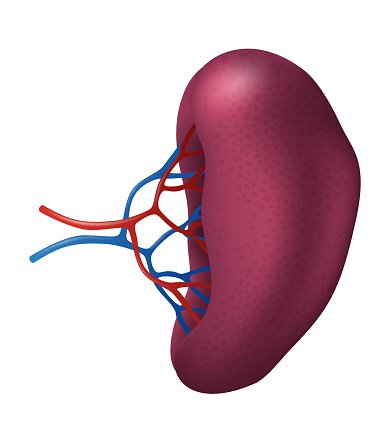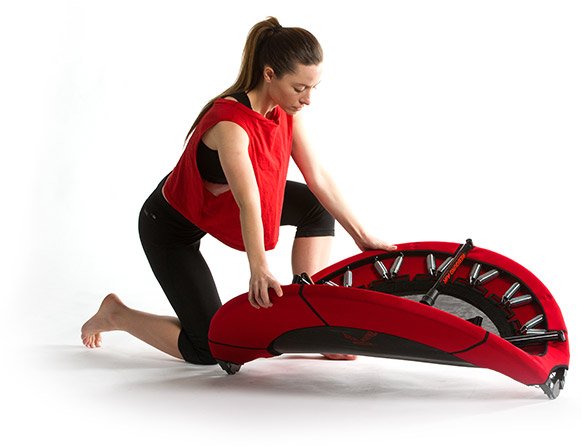Ways to Better Health through a Healthy Lymphatic System
The Lymphatic System
The lymphatic system is a network of tissues and organs that help rid the body of toxins, waste, and other harmful substances. The system includes the small lymph nodes, which are bean-shaped structures found throughout the body. The lymph nodes filter the lymphatic fluid as it passes through them, removing bacteria and other debris. The lymphatic fluid then flows through the lymphatics, a small tube network that carries it back into the bloodstream. The lymphatics also help transport fats and other nutrients from the intestine to the rest of the body. In addition to the lymph nodes and lymphatics, the lymphatic system also includes the tonsils, adenoids, spleen, thymus, adenoids, appendix, and bone marrow. These organs help to produce white blood cells, which play an essential role in fighting infection. The lymphatic system is a vital part of the immune system and helps to keep the body healthy.
Bone Marrow
Lymphocytes start to form in the red bone marrow and are fully developed in the lymphatic tissues.
The Spleen
The spleen is another vital part of the lymphatic system. It is a small, spongy organ located in the upper left region of the abdomen, just below the ribs. It is an essential part of the lymphatic system, which helps fight infection and remove wastes, toxins, and excess fluid from the body. The spleen is filled with white blood cells, which help to destroy bacteria and viruses. It also contains a particular type of cell called a macrophage, which engulfs and destroys foreign particles. In addition to its role in the immune system, the spleen also acts as a blood reservoir. The spleen also filters out old or damaged red blood cells from your circulatory system.
The Thymus Gland
The thymus gland is an integral part of the lymphatic system. This gland is located in the chest just behind the breastbone. The thymus gland produces T cells, a type of white blood cell that helps fight infection. The thymus gland also helps to produce other types of immune cells, such as B cells and natural killer cells. The thymus gland shrinks in size and becomes less active as people age. However, it still produces T-cells, just at a much slower rate. This can lead to a weakened immune system and increased susceptibility to infections. Therefore, keeping the thymus gland healthy and functioning properly is crucial.
The Tonsils
The tonsils are small, round organs found in the back of the throat. The tonsils play an essential role in the lymphatic system and are a part of the body's immune system. They are responsible for removing bacteria and other harmful substances from the body. The tonsils are coated with tiny bumps called crypts, which trap bacteria and other particles that enter the body through the mouth. When these particles are trapped, they are destroyed by white blood cells. The tonsils also produce antibodies, which help to fight off an infection before it can spread to other parts of the body.
The Adenoids
The adenoids are a mass of lymphatic tissue located at the back of the nose, just above the throat. They help to trap bacteria and other harmful particles that enter the nose, preventing them from reaching the lungs. The adenoids are an important part of the lymphatic system, which help to fight infection and disease. In addition, the adenoids produce antibodies that help to destroy viruses and bacteria.
The Appendix
Although it is a relatively small organ, the appendix plays an important role in the overall functioning of the lymphatic system. The appendix is a small, tubular structure that protrudes from the cecum, a pouch-like structure in the intestine. Although its exact function is unknown, the appendix is thought to play a role in the immune system, specifically in the production of lymphocytes. Lymphocytes are white blood cells that help to fight infection. The appendix may help to store friendly bacteria that are necessary for good gut health. It is also thought to filter bacteria and other harmful substances from the lymphatic system.
Damage to Lymph Nodes
If lymph nodes are damaged, it can disrupt the body's ability to fight disease and make you more susceptible to infections. Lymph nodes can be damaged by infection, flu, inflammation, cancer, surgery, radiation, etc. Infections such as mononucleosis or HIV can cause the lymph nodes to swell and become tender. Inflammatory conditions such as Crohn's disease or rheumatoid arthritis can also damage the lymph nodes. Cancerous cells can sometimes spread to the lymph nodes, making them enlarged and tender. In some cases, damage to the lymph nodes can also lead to lymphedema, a condition in which fluid builds up in the tissues and causes them to swell.
One of the best ways to help heal damaged lymph nodes is through movement. Exercise helps to increase the flow of lymph fluid, carrying away toxins and waste products that can build up and damage the nodes. Movement also helps to stimulate the immune system, making it more effective at fighting infection. As a result, even moderate exercise can be an important part of healing damaged lymph nodes.
What Can We Do if Lymph Nodes are Damaged
When lymph nodes are damaged, they may swell and cause pain. Thankfully there are a number of things that can help with damaged lymph nodes.
One thing I suggest is dry brushing. Dry brushing is a type of exfoliation done with a dry, soft-bristled brush. The brush is typically used on the skin in a circular motion, starting at the feet and moving up the legs, arms, and torso. Dry brushing can help to remove dead skin cells, stimulate blood circulation, and improve lymphatic drainage.
Another way is to get plenty of rest. This will allow the body to focus its energy on healing. Another is to drink plenty of fluids, like filtered water, tea, and/or fresh, healthy juices. I also have a beautiful blood and lymphatic tea in my store. This will help to flush out the lymph system and reduce inflammation. Finally, movement is also important for healing damaged lymph nodes, as it stimulates the immune system, encourages the flow of lymph fluid, and promotes healing. This can be anything from gentle stretching to yoga or Tai chi. My favorite way is through an exercise called "rebounding!" Rebounding is basically jumping on a mini-trampoline. I like the Rebound-Air because it has a bar, and the springs are tighter than a basic mini-trampoline. You can go here to find out all of the research and benefits that they mention. Or you can see my article here!
I also found a free class that I wanted to share with my readers. I signed up for it myself. It is from June 13th-19th. I am hoping to learn a lot more about the lymph system, as I believe that is key to feeling at the top of our game. They also offer a free book and some other freebies that I am about to sign up for.
Final Thoughts
Go and register for the free class! This is an affiliate link but you can still get the free class, and not have to buy anything to take the course.
Disclaimer: The contents of this website are based on personal experiences, opinions, and my own research. Information on this website is for educational purposes and is not meant to diagnose, replace, treat or cure any medical or mental health condition. Please see your doctor with any health-related questions. Statements on this website have not been approved or evaluated by the FDA. While perusing this site, please use your best judgment in conjunction with your Naturopath or other health care provider.







